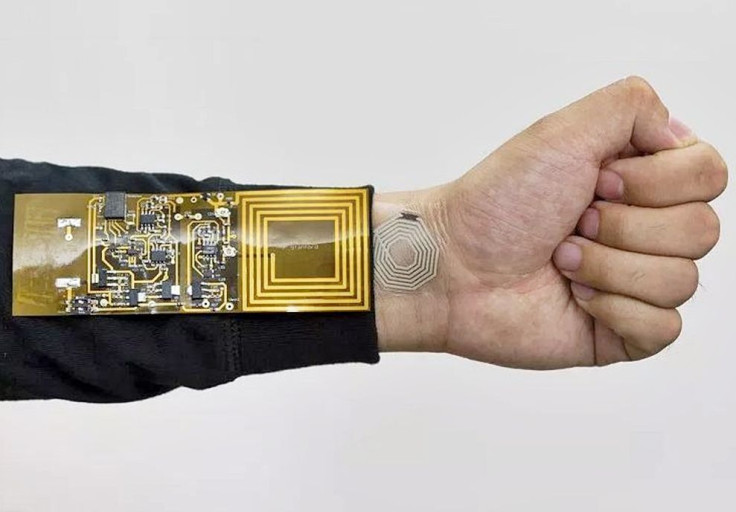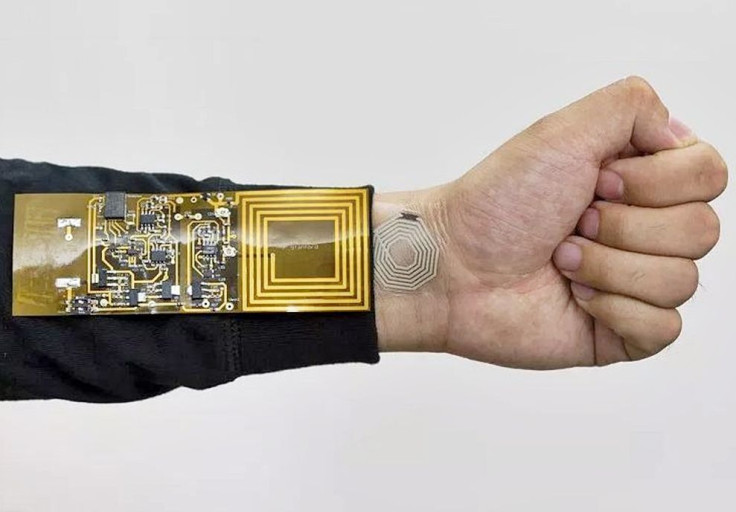Band-Aid-Like Device Monitors Heart Rate, Breathing And Movement

Researchers at Stanford University have developed a flexible stick-on sensor that helps a wearer monitor his health efficiently.
This Band-Aid-like sensor patch is called “BodyNET,” an acronym for "body area sensor network." It detects physiological signals emanating from the skin. BodyNET then sends wireless readings using an RFID chip to a receiver clipped onto the wearer’s clothing.
Based on these readings, the Stanford researchers were able to monitor the test subject’s breathing, heart rate, plus his arm and leg movements.
These wearable sensors are made of metallic ink printed onto a flexible adhesive material. Movements in the sensor produced by the stretching and compression of the body cause tiny changes to the metallic ink that sends signals to the RFID. The receiver collects and re-transmits the sensor’s signal to a smartphone or other electronic device.
When harnessing skin signals, BodyNET doesn’t require batteries, wires or chips. All this patch needs to generate energy is the contraction and expansion of the human skin.
Researchers used the galvanic skin response to gain insights into a person's levels of arousal, "stress, excitement, engagement, frustration, and anger."
During the testing of this wearable tech, researchers attached BodyNET to the wrist and abdomen of a test subject to monitor his pulse and respiration by “detecting how his skin stretched and contracted with each heartbeat or breath.”
Any ordinary RFID coluldn’t be used for BodyNET so researchers designed a novel, stronger type of RFID capable of transmitting more stable and accurate signals. This innovative system uses Bluetooth technology to send the readings from the receiver to a smartphone or any other wireless device.
Once BodyNET becomes commercialized, researchers hope healthcare professionals will use the device to monitor people with heart conditions and sleep problems.
The test device isn’t fit to be worn in public just yet.
“We think one day it will be possible to create a full-body skin-sensor array to collect physiological data without interfering with a person’s normal behavior," Prof. Zhenan Bao of Stanford said.
The team’s next step is to figure out how the patch can also detect sweat and temperature.
BodyNET affirms the truth that our skin can reveal information about our internal states. These outward signs of physiological changes can provide a window into our physical and emotional conditions.
Prof. Bao and the team described BodyNET in the journal Nature Electronics.

Published by Medicaldaily.com



























